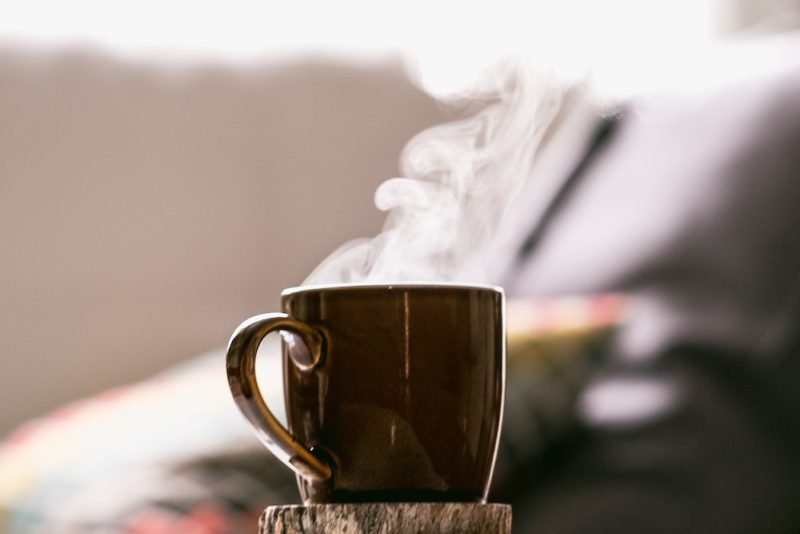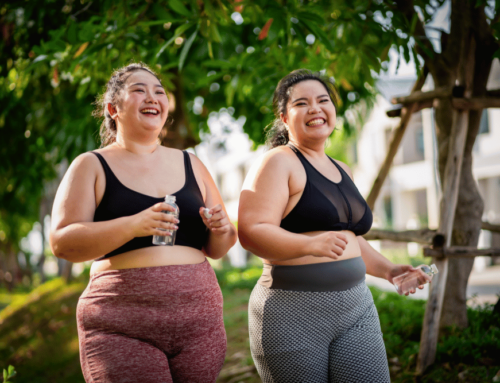
I know, I know…morning rituals can be a little eye roll inducing (and I invented the eye roll, so I know these things). But hear me out. I am not talking about carefully curated and Instagram-worthy scenes of yoga on the lawn at sunrise followed by a steaming cup of matcha tea on the patio (no trace of bedhead or pillowface to be found, of course). That’s not at all realistic, unless you have a full household staff AND inhabit a Disney movie.
Morning rituals can be anything that helps ground you and ease you into your day. Anything that helps you care for body and mind. That certainly could be yoga, or meditation, or a morning swim. However, if you have children or demanding dogs, that may be more like drinking your morning coffee or tea out of your favorite mug and taking a moment to think about something, no matter how small, that you’re grateful for. Even if it’s just that cup of coffee or tea.

Mindful mornings
Whatever form your morning ritual takes, I encourage including some element of mindfulness. Mindfulness brings you into the present moment, gently tugging you back from dwelling on that thing that happened yesterday, or worrying about all the things you have to get done today. At the very least, don’t just gulp down that cup of coffee (or tea) — take a few moments to notice and savor the aroma, absorb how good that first sip tastes, feel the steam on your face and the warmth of the cup in your hands.
I’m a fan of including at least a very brief mindfulness meditation in the morning (after your first cup of coffee, if needed). Many people believe that for meditation to “count,” it has to be something like 30 minutes or more (interesting how similar that is to the myth about what it takes for physical activity to “count”). The truth is that even a ONE MINUTE meditation has benefits. Truly. Those who know far more than me on the subject say it’s so, and my own experience confirms it.
Of course, if you can do more than one minute, that’s even better. I personally like to meditate for 20 minutes or so because that gives me a chance to really settle into the meditation, but some days that feels hard, so I’ll meditate for 5 or 10 minutes, and always feel better for it. That’s true even on those days when my mind is especially restless and the meditation feels hard —- those difficult sessions just remind me of why I sought out meditation in the first place.

My meditation origin story
It was several years ago, when I was finishing my master’s thesis. I had just completed an intensive 9-month internship while also squeezing in my full-time job (I telecommuted) on evenings and weekends. Once I came up for air and was “only” juggling work and my thesis, I found that my brain was still operating at warp speed. It would NOT settle down.
I discovered that there was a Zen Buddhist monastery a 10-minute walk from my house that offered free meditation classes. I signed up, and it was one of the best decisions I ever made (after marrying my husband and deciding to go back to school to get my master’s degree in nutrition).
That monastery was also where I had my first full-on “taste” of mindful eating. Meals there were both delicious and silent, so it was easy to pay attention to the food. I don’t practice mindful eating in quite that way today, but it was an introduction that illustrated the benefits quite clearly, and prompted me to seek out professional training in mindful eating a few years later, along with additional training in meditation.

What would your morning ritual look like?
My morning ritual changes with the seasons. In the summer, it generally starts with going for a walk, since I don’t like walking in the heat and I actually like being outside in the morning when the weather permits. This time of year, wild horses couldn’t get me out for a walk in the cold dark, so I enjoy my first cup of coffee while reading, then do some meditation, and a short yoga routine if I have time. (I do work from home, but some mornings my first appointment or meeting is earlier than others.) I am grateful every day that I no longer have to commute to work!
Another part of my morning ritual is what I don’t do. My phone stays in my home office overnight, and I don’t even look at it (so no checking email or social media) until I’m ready to officially start my workday.
Your morning ritual will be unique to you, and it might not look exactly the same every day (rituals can be a routine, if that works for you, but they shouldn’t be rigid). Make it something that’s enjoyable, not just something that makes you feel “successful” once you tick off the boxes. It can be something energetic, if that suits you, or something that “tunes you up” for your day if you tend to be a slow starter.
A good place to start is to check in with yourself about what you need. What would feel good? Part of intuitive eating, as well as mindful eating, is checking in with yourself about what you need, foodwise, but intuitive and mindful living means checking in with body and mind about what it needs in terms of things like sleep, physical activity and self-care (no, that doesn’t mean repeatedly hitting the snooze button…if you’re doing that, I suggest taking a closer look at your sleep habits.

Want to meditate, but don’t know where to start?
I can (and sometimes do) meditate all by my lonesome, but most days I like to do guided meditation. I’m often asked which mindfulness meditation apps I recommend, and these are my favorites:
- Ten Percent Happier. This has been my go-to for the past few years. I like that it has guided meditations as well as mini “classes” by amazing meditation experts. The app is free for a certain number of meditations and lessons, but then you need a subscription.
- Headspace. This was my first meditation app, and I still love it, even though it’s not my go-to. They have fun little animated videos that help explain what’s going on in your head. I also find founder Andy Puddicombe’s voice delightful (read: English accent). This app is also free for the first 10 meditations (“the basics”).
- Insight Timer. This app has more than 30,000 free guided meditations. I really like it, but it can be a little overwhelming sifting through all those meditations to find the ones that resonate with you, especially if you are a total newbie. Still, free.
There are other apps I’ve heard are good (Calm is one I hear about a lot), but I haven’t used them, so I can’t speak from personal experience. Since all of the ones I mentioned are free (at least initially) why not give one a whirl in the morning (or anytime)?
Carrie Dennett, MPH, RDN, is a Pacific Northwest-based registered dietitian nutritionist, journalist, intuitive eating counselor, author, and speaker. Her superpowers include busting nutrition myths and empowering women and men to feel better in their bodies and make food choices that support pleasure, nutrition and health. This post is for informational purposes only and does not constitute individualized nutrition or medical advice.
Seeking 1-on-1 nutrition counseling? Learn more about her Food & Body, IBS management, and nutrition counseling programs, and book an intro call to see if the program is a good fit, and if we’re a good fit!
Want exclusive content on nutrition, health, diet culture and more, plus critiques of nutrition and health journalism? Subscribe to my Food Noise newsletter! 📣






